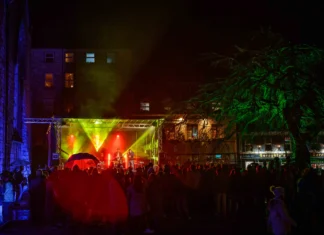A new study by a research team at University of Galway has described the developmental potential of adult stem cells in a creature which is a close relative of jellyfish.
The creature, cnidarian Hydractinia, is part of a group of animals that includes corals and jellyfish, and unlike most of its allies, Hydractinia can be easily grown in the laboratory.
The study was carried out by in Centre for Chromosome Biology and was published as a cover article in the international journal Current Biology.
The team led by Professor Uri Frank and PhD student Áine Varley established this animal as a model organism for stem cell research.
This included the development of genetic tools that allow the generation of transgenic animals.
A major question in stem cell biology is the ability of these cells to generate other cell types, such as neurons and muscle, throughout life.
In the study, the team addressed the problem by transplanting a single stem cell from a donor animal to a recipient. The single transplanted stem cell was genetically labelled by fluorescent dyes, making it visible in the tissue of the recipient.
The research team found that, following several months, progeny of the single transplanted stem cell gradually displaced the recipient’s own cells. Eventually, a complete takeover occurred, thereby the recipient animal became genetically identical to the donor.
University of Galway PhD student Áine Varley who led the study said that cnidarians are known for their exceptional regenerative ability.
“Many of these animals can regenerate whole bodies from small tissue fragments. Another unusual feature of cnidarians is the apparent lack of ageing; indeed, some cnidarians, such as corals, are known to live for thousands of years without experiencing any decline in their health,” she said.
“These fantastic traits, which are uncommon in animals, are thought to depend on a population of adult stem cells that behave like embryonic cells in that they can renew all tissues, continuously.”
Professor Uri Frank said: “Hydractinia adult stem cells are functionally similar to human embryonic cells.
“The technology developed in this project allows us easy access to embryonic-like cells in an adult animal. The study has implications on our understanding of how stem cells function to contribute to tissue regeneration.”











